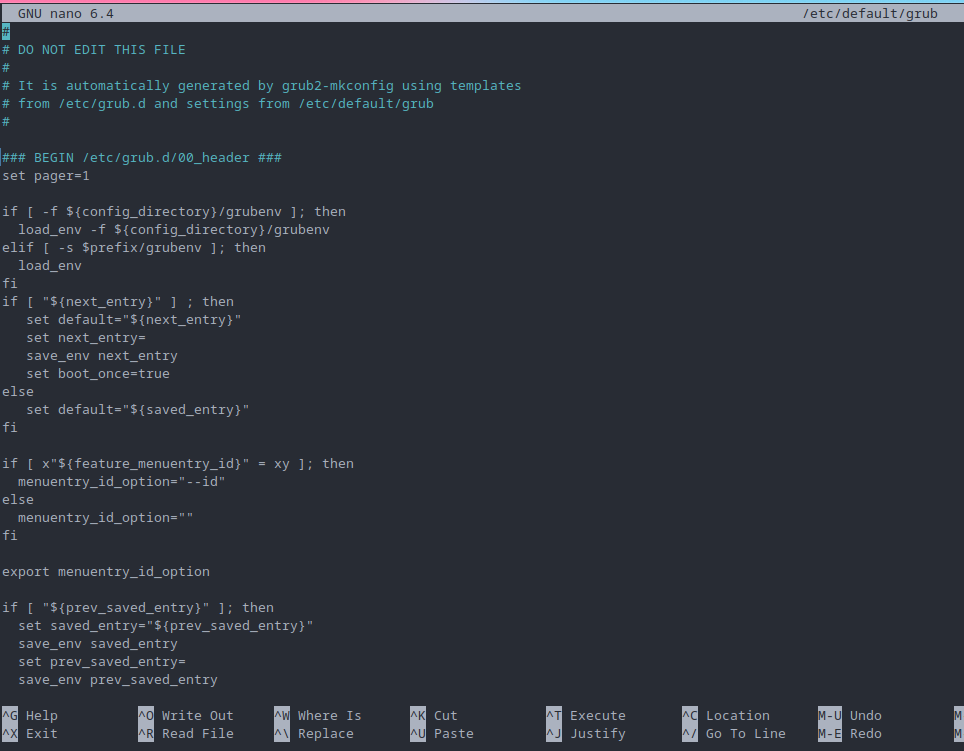I’m trying to update my grub boot order back to booting the first option instead of the second, so I run sudo nano /etc/default/grub, but it brings up this, which is not the file I want to edit.
I’m on fedora 38

This should get you back to defaults:
sudo cp /usr/share/grub/default/grub /etc/default/grub && sudo update-grubAt some point you definitely did accidentally write to /etc/default/grub when you meant to write to /boot/grub/grub.cfg.
There’s no shame in that; Grub’s configuration process is very confusing and counter-intuitive.
Everybody who has used Linux long enough has stories of breaking their systems in sillier ways, and this didn’t even really break your system 🙂.
THanks! but I’m getting the error
cp: cannot stat '/usr/share/grub/default/grub': No such file or directorywhen running this.What version of Ubuntu are you using?
What is the output of the following command?:
dpkg -l | grep grubIf you urgently want your grub menu to default to the first entry that can be done first, but unless that’s needed I’d prefer to get to the root of the problem(s) and get a proper fix.
This command doesn’t work for me
This looks like
grub2-mkconfigwas run with the output mistakenly set to/etc/default/grub. Someone rangrub2-mkconfig -o /etc/default/grubInstead of
grub2-mkconfig -o /boot/grub2/grub.cfgso I run
sudo nano /etc/default/grubFor improved security during file edits that require root access, it’s highly advised to use
sudoedit(orsudo -e). This method is considered the standard practice to avoid the security pitfalls associated with directly invoking editors withsudo. To ensure the use ofnanowithsudoedit, simply set theVISUALenvironment variable withexport VISUAL=nanobefore runningsudoedit. Alternatively, for a one-off command:VISUAL=nano sudoedit /path/to/file.Please note that while
sudoeditis a safer starting point, it’s not the only method available. Alternatives such asdoas,doasedit, or leveragingpolkitwithpkexeccan offer even more controlled and secure ways to manage file editing with elevated privileges. However, it’s perfectly acceptable to stick withsudoedit, as it’s a commonly trusted tool.Be aware that direct usage of
sudo nanoor other editors is strongly discouraged. It bypasses important security mechanisms and can lead to inadvertent system-wide risks.EDIT: changed
VISUAL=nano sudoedittoVISUAL=nano sudoedit /path/to/file.On shared systems with untrusted users, you’re right. On your own system when you already have full admin rights,
sudo nanois fine and doesn’t have any security implications that I’m aware of.
What distro?
Fedora 38
Well, if you look at the file… and search the internet for “fedora edit grub entry not possible” that works.
You use grub2-mkconfig to create this file, and what you want to change it in another file that is used to create this one.
The thing is, what do you want to edit?
I want to edit the grub config, to change the default boot order
Did you already do an internet search? Positive you will find that answer



